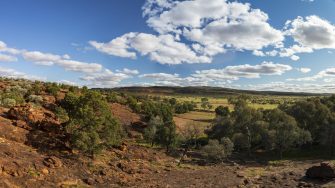
Synopsis
Tree rings have been used in various applications to reconstruct past climates as well as to assess the effects of recent climatic and environmental change on tree growth. While measuring ring-widths as a function of hydroclimate has been used in several Australian studies, recent developments have highlighted stronger climate signals can be reconstructed from using other tree-ring parameters than simple ring-widths.
In the project: “The Potential of Callitris intratropica Tree-Rings & Wood Properties for Climate Reconstructions in the Northern Territory” we’ll explore the potential of blue-light absorbance (DBI) from tree-rings of Callitris intratopica in the Northern Territory for drought reconstructions.
Today, there’s a pressing need for extended records of past drought conditions in the Northern Territory for helping to understand future risks. Earlier work has proven that the species can be used as a drought recorder (e.g. Palmer et al. 2015). Through our research, we wish to explore even stronger drought records, obtaining them using the newly developed technique of tree-ring blue-light absorbance (DBI).
Aims
Comparison of climate sensitivity and other tree-ring properties of Callitris intratropica using a collection of tree samples from Nitmiluk and Limmen National Parks in the Northern Territory.
Student benefits
Through this project, you’ll learn how to:
- design and carry out experiments
- analyse and interpret data
- how to write a scientific paper.
You’ll also be integrated into the Centre of Excellence for Australian Biodiversity and Heritage, which has funding available for training and career development.
Supervisors: Prof Chris Turney, Dr Jonathan Palmer and Dr Zoë Thomas.
Get involved
To learn more about this project, contact Prof Chris Turney.
E: c.turney@unsw.edu.au
T: +61 2 9385 8647
